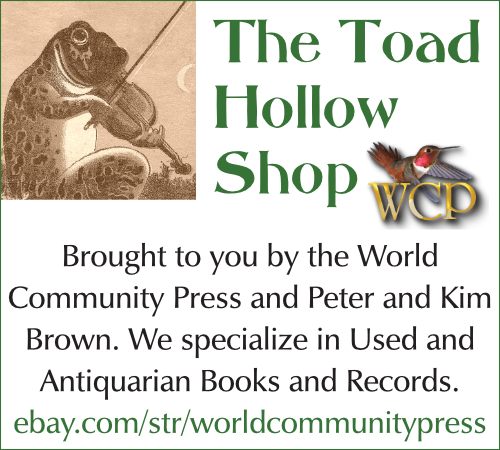A Basic Tool Kit for a Renaissance Life~ a proposal for a curriculum of creativity and imagination for children ~ Feb 18, 2008 For many years now, my wife and I have experienced what might be called “an adventure in home schooling”. We have home schooled our four children from day one, starting with our eldest boy, Tymon, who is now twenty. Our eighteen-year-old daughter, Grace, is finishing her senior year. Ranin, seventeen, is a junior, and Tadin, fourteen, is a freshman. We have discovered that home schooling is much harder than we thought it would be (duh!), and we have had mixed results. We’re certainly not experts, by any means. We both shared in the process, agreeing each year on the curriculum that the children would follow. Since I worked at home, as a consultant, for most of those years, I was able to be more involved than I might have been if I had worked outside of the house. One of the difficulties that we ran into was that both Kim and I never did well in math or science, so our ability to help our children in that regard was weak. We used a variety of textbooks and computer programs, with the net result that our children replicated our own rather minimal standards in those topics. However, we did much better in the realm of creativity, for both of us are writers. We adopted a “portfolio / essay” methodology of learning, rather than using tests as our benchmarks. We found various textbooks that we liked and had the children read a certain number of pages each day, and then write essays on what they read. Beyond the basics of academic learning, such as history (which we pushed very strongly), and other academic subjects, we decided to focus on creativity, imagination, invention and the arts, with the idea that we would do our best to provide what we initially called “A Basic Tool Kit for a Renaissance Life”. I’m not certain if that’s the best title, but it’s what we came up with at the time. The Random House Unabridged Dictionary defines “renaissance” as “a renewal of life, vigor, interest, etc.; rebirth; revival: a moral renaissance” and “any similar revival in the world of art and learning”. Our concept about this “tool kit” is that children need more than academics. They need skills that will enable them to flourish as rounded and mature adults. In addition to a certain set of skills, they need a foundation of cultural knowledge that will give them an internal richness of life. We thus embarked on an effort to provide this type of tool kit in our home school. For a number of years, we made Mondays “Creative Day”, and had classes such as Invention and Design Class, where they had to come up with a new invention each week, or a better design of something that had already been invented. We wanted them to learn how to think outside of the box, how to gain the determination to attack problems without feeling limited and how to be self-starting. Most of all we wanted them to gain the belief that they should and could do something to improve the world. Vision, imagination and compassion were on the top of our list of attitudes that we wanted to teach them. We had them read Dale Carnegie’s book The Quick and Easy Way to Effective Speaking Mondays included a class where they read various books about creativity, including the book How to Think Like Leonardo da Vinci: Seven Steps to Genius Every Day One of the areas that Kim hit a home run with was music appreciation. She filled the house with a huge selection of eclectic music on a daily basis. Because of that, the children developed a well-rounded appreciation of fine music. To get teenage boys to like opera is a task and a half, but she did it. We also gave them a half hour a day piano class, using the book, Piano for Dummies One of the things we attempted, but did not entirely succeed at, was to teach them all how to sing, although they seem to be exploring that now on their own. Kim can sing better than I can, but we both lack the skills to teach singing. I tried to use books and CDs (like Singing for Dummies Singing is an activity which strikes fear into many people’s hearts. Yet how wonderful it would be if children were trained in school to sing without fear! They all might not be “naturals” who could win first place in American Idol contests, but they could at least experience the joy of singing on a personal and small group level. Think of all the Irish who sing in pubs! They’re having a very good time, even if they’re not experts at singing. My mother, Polly Kapteyn Brown, was an art teacher and abstract artist. Even though I never learned how to draw, art is in my bones. Kim’s father and two brothers and three nephews are artists as well. Kim and I both love art, and would like nothing better than to have fine art on every wall of our home. We’ve made do instead with framed posters of various masterpieces. It occurred to both of us, as we were browsing through the Norfolk Museum of Art one day, that we should teach our children how to draw. Shortly after that, our children started a new class, where they drew portraits and figures and fashion drawings at least three days a week, using pencil. We bought many art books, but found that two were especially good, so on Mondays the children studied Drawing With an Open Mind: Reflections from a Drawing Teacher One of our other curriculum efforts was to introduce them to film, done after school hours. We had them watch all kinds of films, and through those efforts, the three boys all developed a keen interest in becoming actors and film directors. To accommodate that, we made Friday “film day”, where the boys, and sometimes Gracie, make a short film. Since then, we’ve dispensed with Monday as creative day, in order to increase their academics, but we continue to push creativity as a prime element of their school curriculum. We’ve also tried to teach them entrepreneurism, and had them read various books about making and managing money, which is a necessary skill for adults that too many high school students don’t learn. Our results were mixed, but hopefully we planted a seed. Now, as our children are almost out of school, my feeling is that even though our results in some academic areas are spotty, we’ve succeeded in imbuing imagination and a creative urge in our children. I believe that the seeds we planted will continue to grow, and that we’ll be deeply inspired by our children’s accomplishments in the coming years. Of course, I’m their parent, so I’m not entirely objective :-). Most of all, I’ve gained the conviction that all children should be given this type of training in creativity and imagination. Einstein said, “Imagination is more important than knowledge. For knowledge is limited to all we now know and understand, while imagination embraces the entire world, and all there ever will be to know and understand.” I propose therefore that schools everywhere adopt a very comprehensive program of creativity and imagination, from the earliest grades, that will provide every student with A Basic Tool Kit for a Renaissance Life. The examples listed above are areas that we feel deeply about, but I’m sure that they can be dramatically expanded and improved upon. With training like this, I believe that children will leave behind the phenomenon of being stuck in cultural deserts with no vision, and instead gain a magnificent view of their own potential and capability to benefit the world. (Comments are moderated and must be approved.) “The Epiphany of Zebediah Clump”
Watch our first film right here. |









